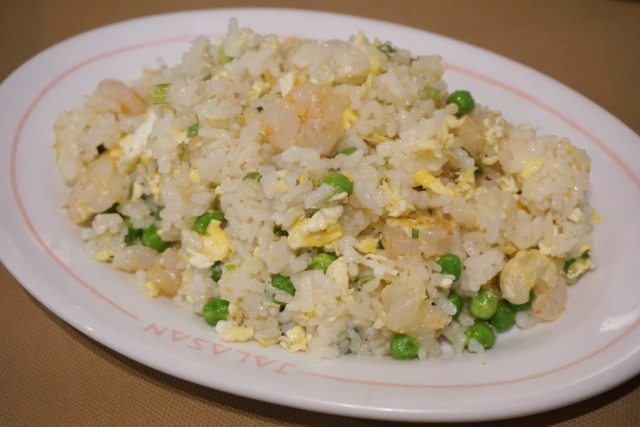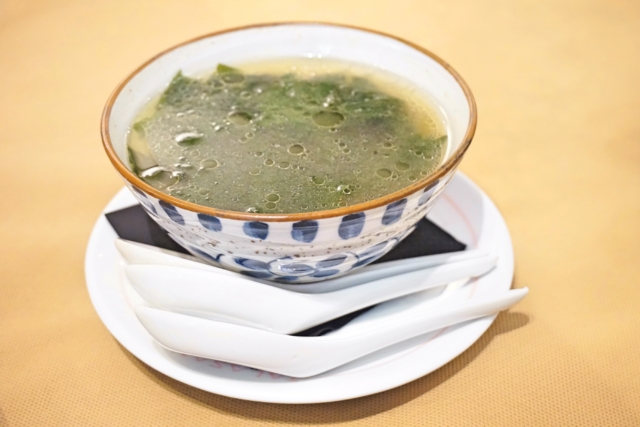#11 in the series – challenges & innovations for Korean restaurants abroad
When you start interviewing individuals with the same job description but in different settings, you will evidently come across a lot of similarities: that introducing Korean food to another culture comes with many challenges, but also many rewards. That the Korean settlers’ taste changes with more time spent in their new home country, whether or not reflected in the food cooked at their restaurant. But you come to discover many unique stories as well. It wasn’t any different when we met the lovely couple behind Jalasan, a Korean restaurant in the sprawling city of Valencia, which is known for its paellas.

Myung Keun Lee and his wife had come to Spain more than 30 years ago, not to be ambassadors of Korean food, but rather for Mr. Lee to learn the guitar. Four years passed and the couple liked it so much that they decided to stay. Fast forward 28 years and they have the third generation of customers eating at their restaurant. With a seven-man-and-woman-strong team they have established themselves with the help of time and incredible food. Both Mr. Lee and his wife work in the kitchen, ensuring that everything goes well where it really matters: the delivery of delicious food (it certainly helps that Mr. Lee’s wife comes from a nutrition background).
When we tried their ojjingeo and yukgaejang dishes (spicy-stir fried squid and spicy beef and vegetable soup), we were amazed at how tasty it really was. Never mind authenticity, although my two Korean companions clearly experienced the taste of home, it was simply too good to leave even a small morsel. Perhaps it’s simply about the couple’s cooking skills, and having honed these over the years. But here’s a thought – perhaps it was the location they found themselves in which pushed them harder to be the best they could.
[su_quote]In Valencia, there are many people who eat a lot of rice, onions, and so on. That’s why it’s easier for them to like Korean food.[/su_quote]
When the Moors brought Asiatic rice to the Iberian Peninsula in the 10th century and started growing it in Valencia’s Albufera, a food culture developed around rice which led to the creation of dishes such as paella, arroz negro (rice with cuttlefish and its black ink), arroz al horno (oven-baked rice), and more. As Mr. Lee explained, because people in Valencia enjoy eating rice dishes, the introduction of Korean food to Valencians was not as difficult a task as it might’ve been elsewhere in the country.
What’s more, from childhood on Spaniards are likely to have had their taste buds trained to like dishes heavy on onion and garlic (usually not raw, but nonetheless), and to enjoy fermented foods that are not uncommon to Spanish cuisine – think pickled anchovies. Korean foods such as kimchi and deonjang jjigae are thus familiar enough in taste yet exotic enough in appearance and association to be attractive to Spanish customers from the get-go. But in order to stick around, these familiar yet exotic foods served at Jalasan had to be at least as tasty as their non-exotic equivalents.
Whether Mr. Lee and his wife stuck around precisely because they had the great quality and taste down from day one, or because they improved along the way in order to run a successful business, amazing taste was always going to be a prerequisite for survival in a city where succulent rice, onion, and garlic dishes were already readily available. Sure, it made the adaptation process easier, but it also meant competition was greater – not in the form of other Korean restaurants (there exists only one other in the city of Valencia), but in that of the gazillion Spanish ones. The characteristic of Korean food in Spain as something exotic was to their advantage when they initially started, but the strength of exoticness as a unique selling point was diminished by the familiarity of some of the ingredients in the dishes offered at their restaurant.
It is thus understandable why the couple chose to stay away from fusion and instead focus on an authentic Korean cuisine, which include dishes such as bibimbap and bulgogi, kimchi and doenjang jjigae. Mr. Lee’s wife even decided to add bibim naengmyeon to the menu, a spicy, cold noodle dish which in fact originated in North Korea but is not advertised as such on Korean restaurant menus (South Koreans enjoying this food are aware of its origin, but of course the dish has since evolved into many variations). Cold, spicy noodles in many food cultures is certainly an acquired taste, and initially they had only added it to the menu for visiting Koreans, not envisioning for local people to like it. But it turns out that many local customers, defying all expectations, did in fact have a liking for it. It seems like there are times when our taste habits do not stand in our way.
While Korean dishes are bound to be more exotic to Spaniards than Spanish food, it was fascinating to note some of the familiar descriptions on the menu. I asked Mr. Lee’s wife about the Korean dishes on the menu that they had referred to as tortilla: haemul jeon (a seafood and vegetable pancake) and bindae-tteok (a pancake made with mung bean and vegetables). She explained that the way tortilla originated as a poor people’s food (you can read more about this here) was very similar to how Korean pancakes had developed. Thus it seemed only fitting to describe this Korean dish, which was similar to the tortilla in terms of its development and ingredients, in terms familiar to the Spanish.
It’s the same kind of concept to when you’re learning a new language. Your cultural reference point is always going to give your experience a different angle to someone coming from another background. You’re Japanese, learning Korean? You won’t have many new things to learn by way of grammar, and a lot of cultural expressions will be familiar to you. But you’re Spanish learning Korean? You’ll have a longer way to go to bridge that gap between one language and culture, and another.
If language teachers understand more about where it is that you’re coming from, they can help you close that gap in a way that makes it less challenging. If my Korean teacher speaks a little Spanish, has spent some time in the country, and is still in touch with Spanish friends, they’re well equipped to prepare the smoothest possible path for me to take in order to delve into Korean language and culture. Mr. Lee and his wife are those Korean teachers who help the Spanish acquire a taste for Korean food. They know who they’re dealing with, they recognize and elevate similarities, but they also celebrate the differences. And that’s precisely the kind of place where I enjoy having Korean food.
This is part of a series on the challenges and innovations for Korean restaurants abroad. If you’d like to read more, see the Soban article (Krefeld, Germany), the Gogi Matcha article (Düsseldorf), or the Arirang article (Stockholm).
Area: Gran Via district in Valencia, Spain
Closest metro: Colón (linia 0, 3, 5, 7, 9)
Address: Jalasan
Carrer de Ciscar, 43
46005 València
Spain
Closed: Mondays and Tuesdays
Website: https://en-gb.facebook.com/Jalasan-691059407597510/




